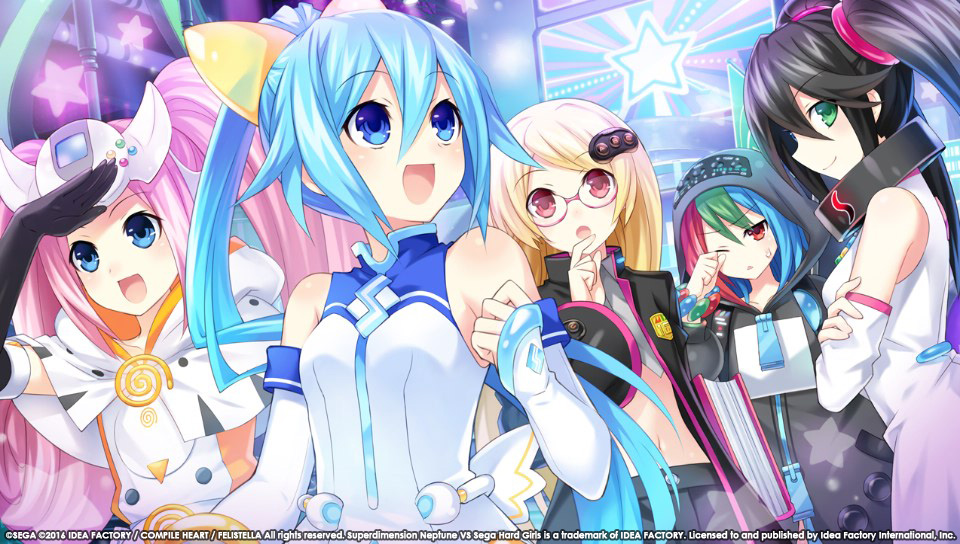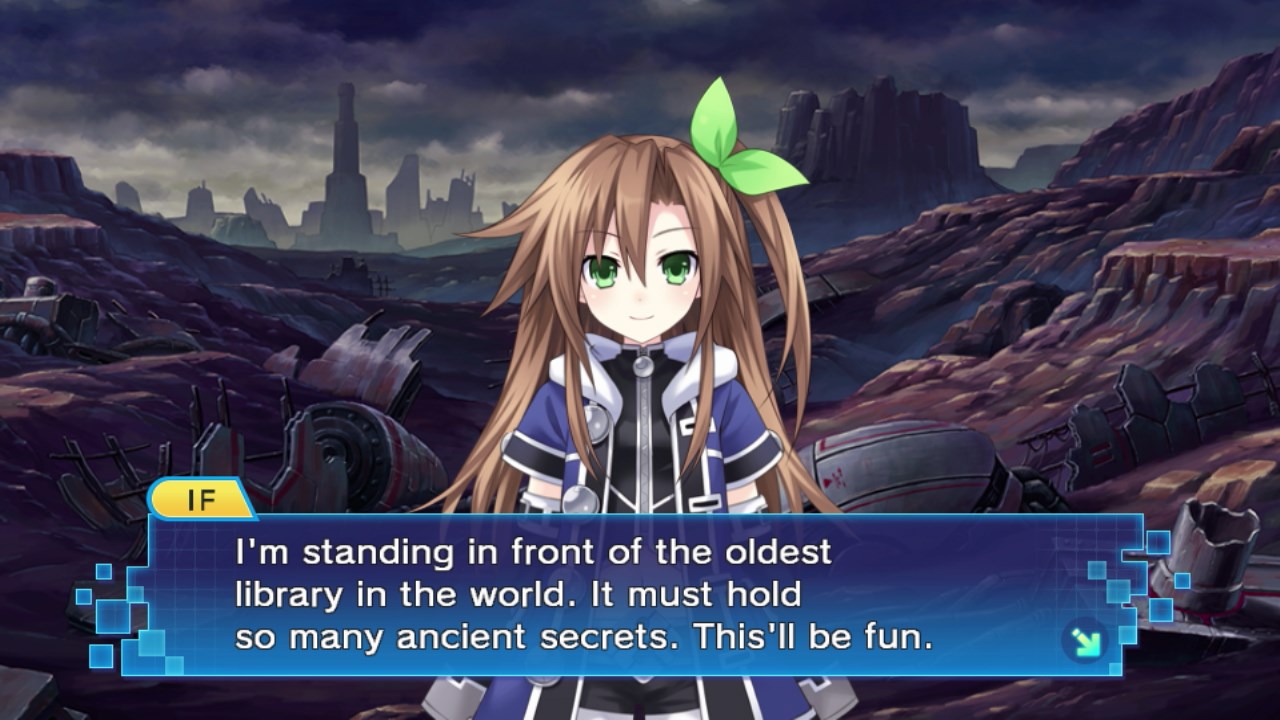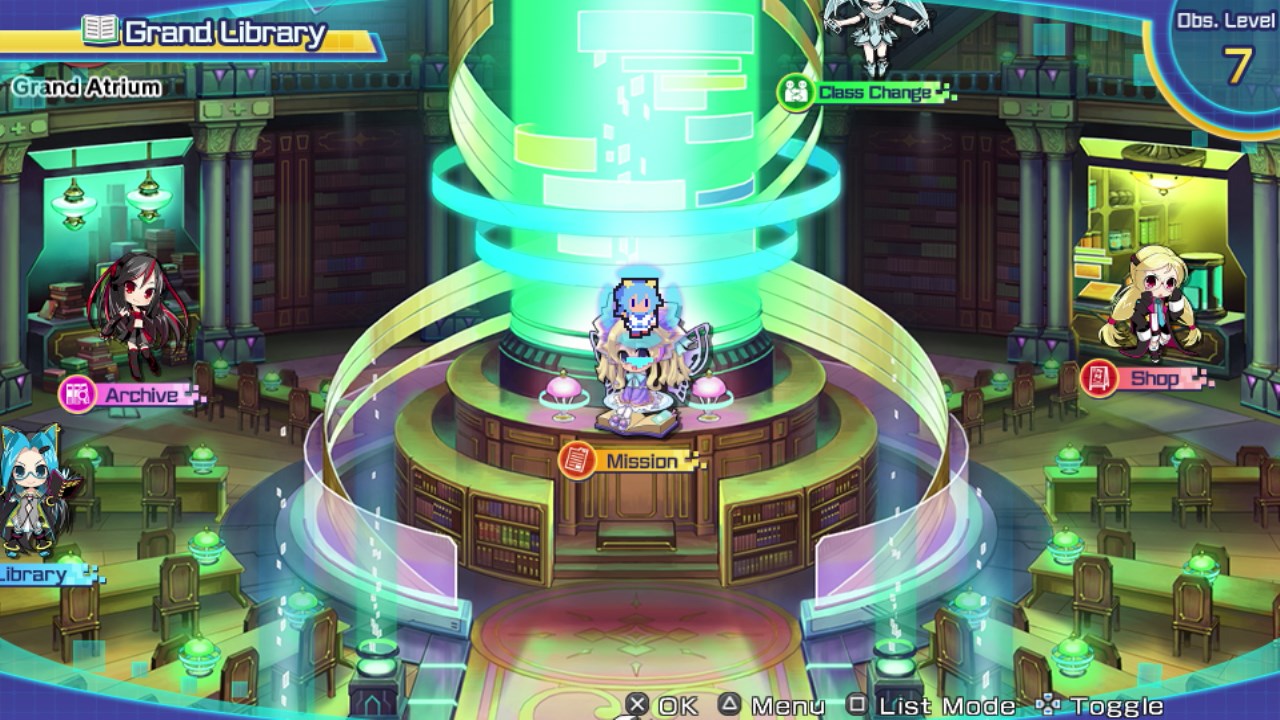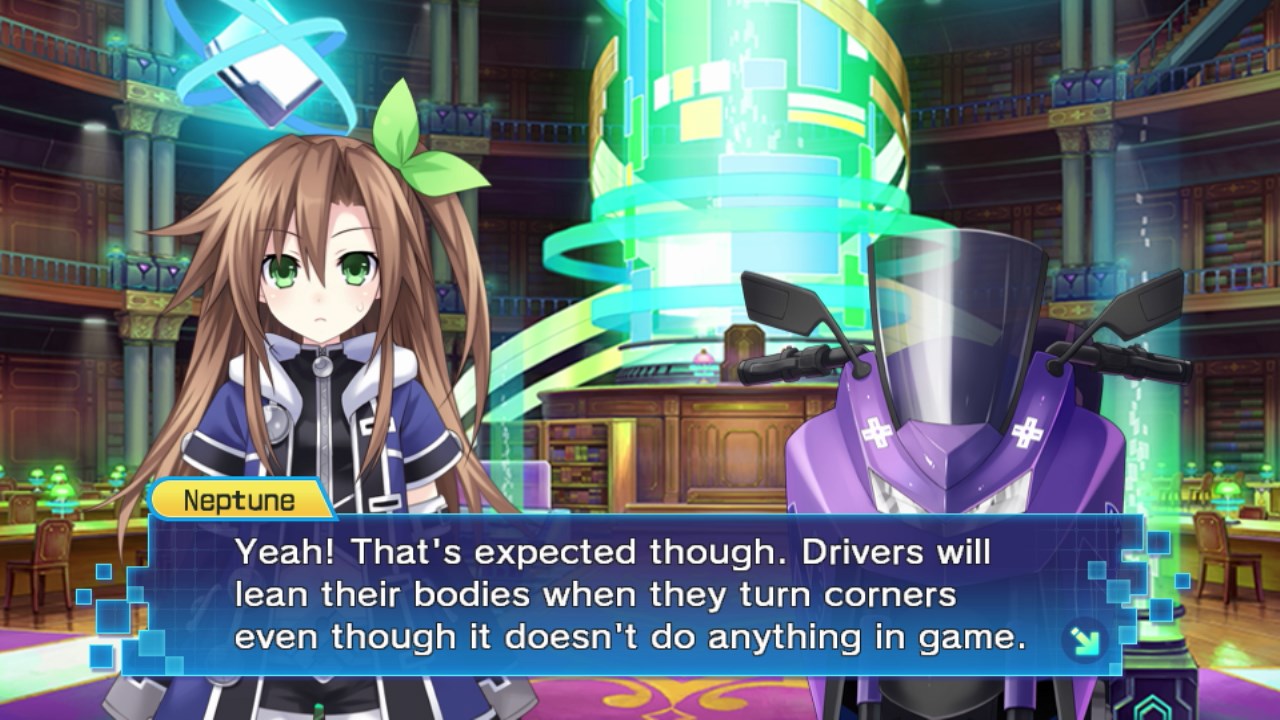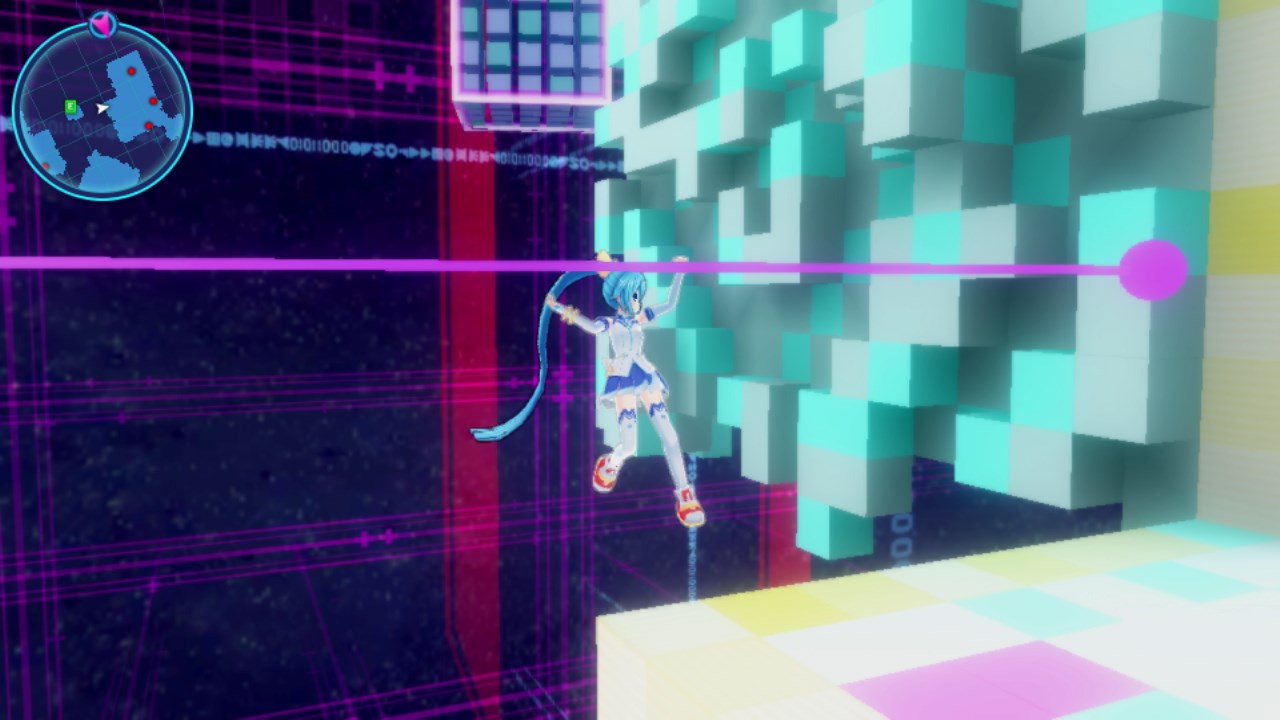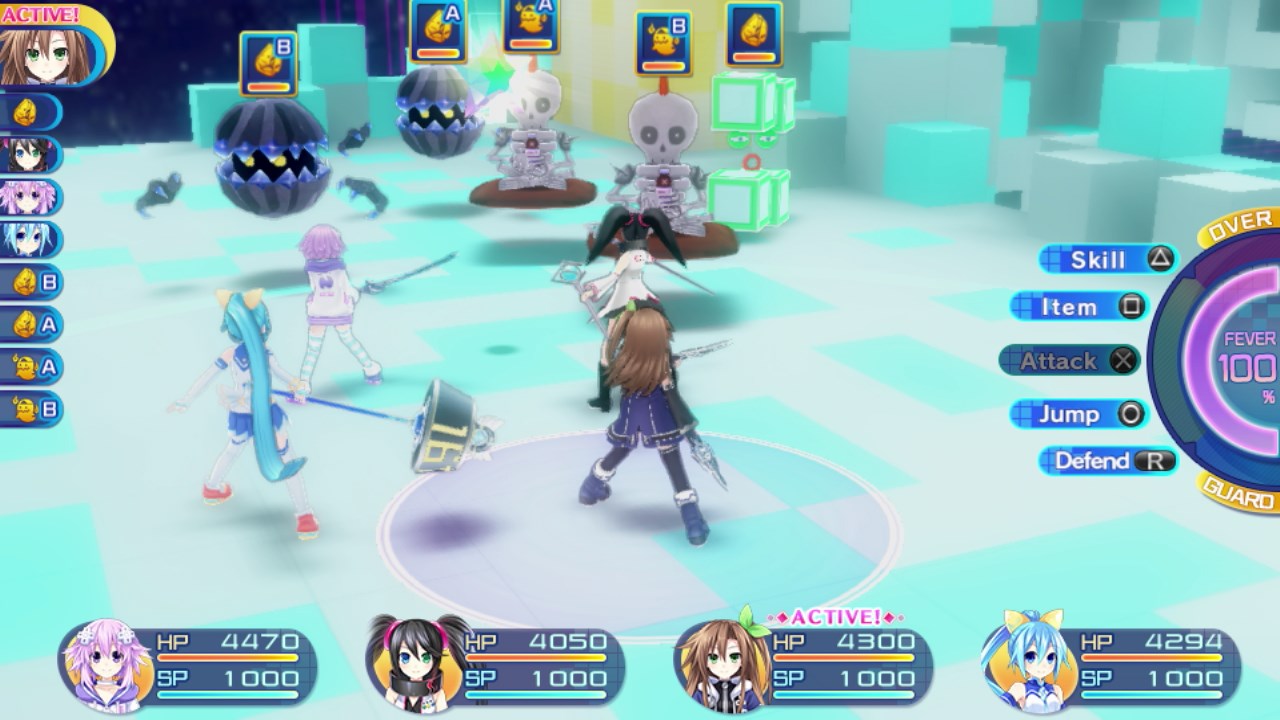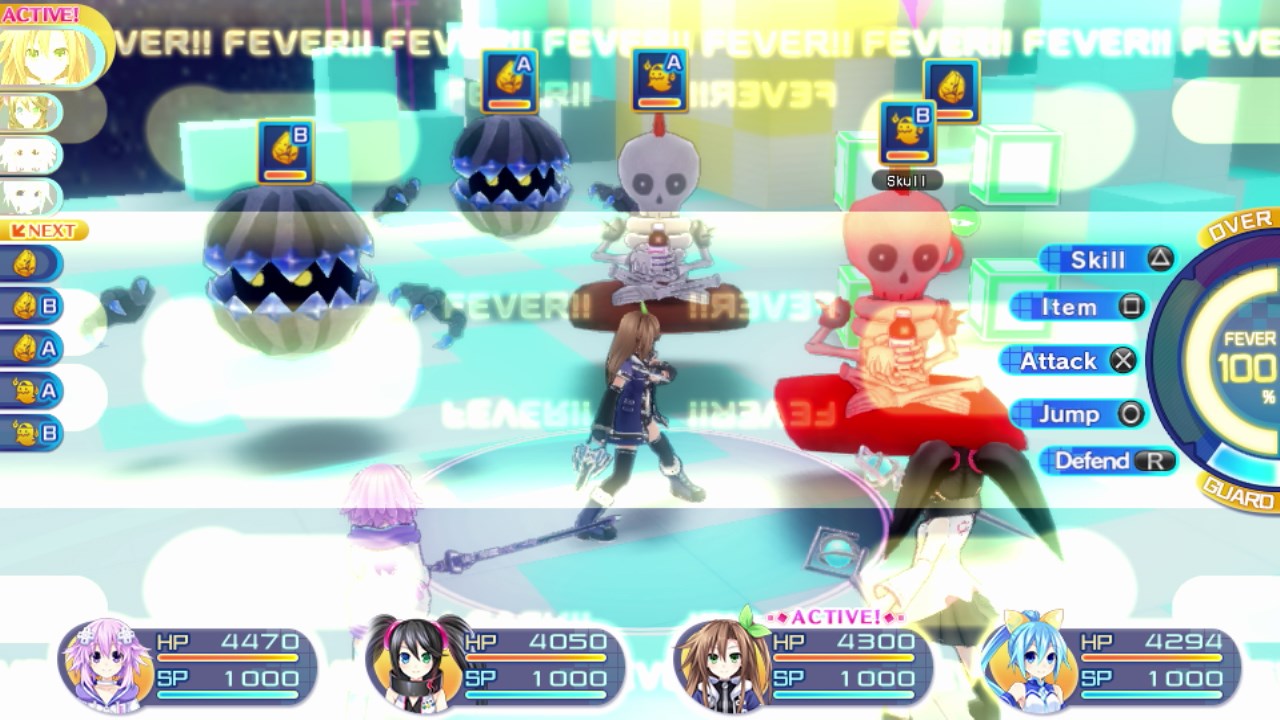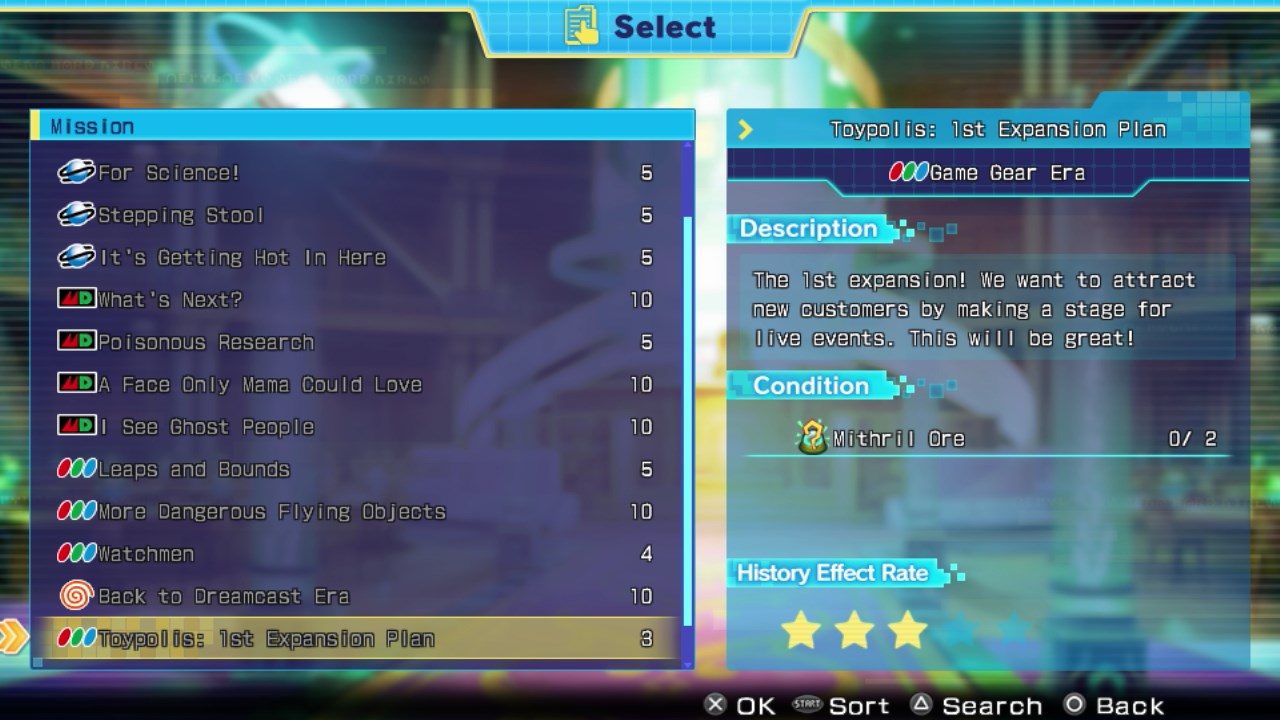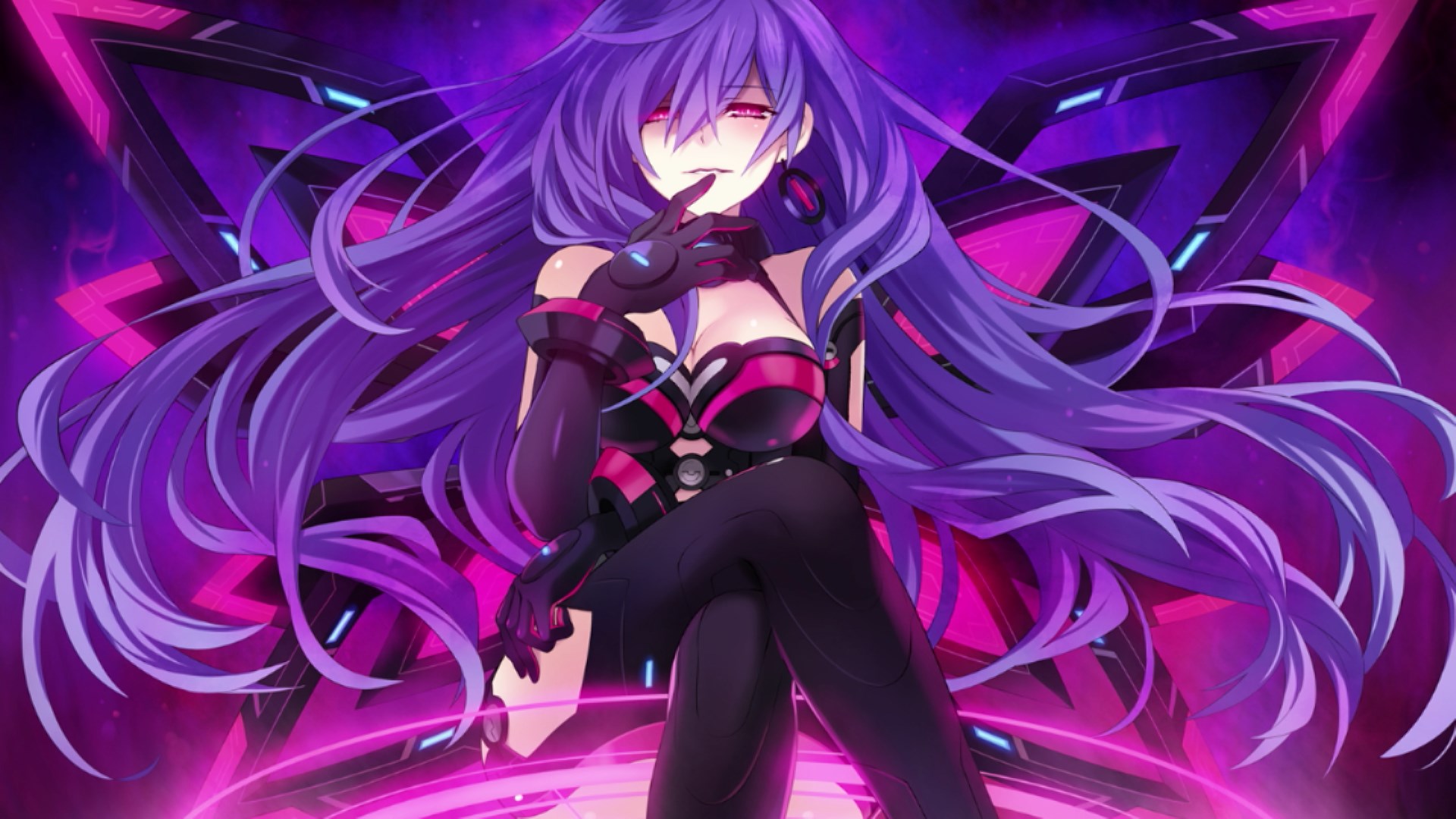The Hyperdimension Neptunia series has been around for a while now, spawning plenty of games, remakes and spinoffs. In the Neptunia games, powerful goddesses called CPUs govern over their respective regions, each representing a real-life console such as the PlayStation, Wii, Xbox and even the cancelled Sega Neptune. This latest game in the series, Superdimension Neptune VS Sega Hard Girls, is a crossover with the SEGA Hard Girls project, which features anthropomorphized goddesses representing SEGA’s past gaming consoles. With a similar theme, it’s easy to see that a crossover of these two projects makes sense.
Prior to playing Superdimension Neptune VS Sega Hard Girls, my experience with the Hyperdimension Neptunia franchise was rather limited. That said, I did get around to playing the PC version of Hyperdimension Neptunia Re;Birth 1 before playing this game, so I had a good idea of what to expect. For the purpose of this review, I played through Superdimension Neptune VS Sega Hard Girls, and managed to get the game’s True ending. Below, you can read my thoughts on the game based on that experience!
Story and Dialogue
The game’s story revolves around the main characters IF and Segami. IF is an adventurer who spends her time exploring the world with her motorcycle. Unfortunately her world is a desolate one, brought to ruin by the battles between the SEGA Hard Girls and CPUs in the past. At the start of the game we join IF in her search for the oldest library in the world, called the “Grand Library”, which is said to hold all of the worlds’ history. But just as she finds that library, she notices someone (the other main character, Segami) falling out of the sky and somehow manages to rescue her just before she crashes into the ground. IF ends up bringing the unconscious Segami with her as she enters the Grand Library, where they meet Histoire, the librarian who maintains the Grand Library.
When Segami wakes up, it becomes clear that she suffers from amnesia and doesn’t remember how she got there or who she is. All she remembers is her name. Soon afterwards, Histoire alerts IF to the fact that history, which is stored within the books in the Grand Library, is starting to disappear. She asks IF to investigate, and Segami insists on joining IF in the investigation. With the help of Histoire, IF’s bike is modified to allow for time-travel (reminiscent of the Delorean in the Back to the Future movies). IF and Segami end up traveling to four different eras, each one named after the SEGA Hard Girl which lived during that time period (namely Saturn, Game Gear, Mega Drive and Dreamcast). But aside from a SEGA Hard Girl, each era also has its own CPU, a goddess that governs and protects the land. For some reason, in each era a conflict occurred between the SEGA Hard Girl and the CPU, and it’s these conflicts that ended up bringing the world to ruin. During their investigation of the disappearance of history, IF and Segami end up getting mixed up in the battles between the SEGA Hard Girls and the CPUs…
That’s a quick introduction to the game’s plot. Time travel has proven to be a popular theme in science fiction stories, but it’s not an easy subject to get right. Story writers typically try to define the rules of time travel for their own story in order to avoid overly blatant plot holes. But that’s not something this game attempts to do. Through the character of Histoire, the game only makes a few attempts to explain how time travel would actually work in their world (in particular the “grandfather paradox” is brought several times). But even then, near the end of the game, the story ends up breaking what few rules it established earlier on. I’m not even sure why some of the pseudo-intellectual discussions regarding time-travel even occurred. By the end of the game, I had long given up trying to make sense of what was going on, much like the characters themselves. Of course, the game doesn’t take itself seriously enough for this to be a real problem. But there are a few rare moments in the game where the characters are actually having a serious discussion, and these scenes could have been more meaningful if the story actually made more sense.
Where the game also falters is in its ability to create a believable world. in Re;Birth 1, there was at least some semblance of world building, with enough side characters to give you the impression that there are indeed people actually living in the world. In this game, even less attention is given to this aspect of the story, and the focus is almost entirely on the (all-female) main cast. As a result, the story relies heavily on a suspension of disbelief from the player. It really feels like a step back, where one would expect the game to take steps forward.
Fortunately, the banter between the characters does make up for the weak story. As is a staple for the Hyperdimension Neptunia games, there are countless references in the dialogue to the past and present video gaming market. The dialogue is full of meta-references, particularly coming from the character Neptune, who frequently reminds the other characters of her status as the protagonist. At times she will also recall events from previous games in the series, despite the fact that these happened in a alternate universe.
While the SEGA Hard Girls don’t get that much time in the spotlight, you do get a sense of their different personalities. I liked the fact that we get to see the SEGA Hard Girls in a different setting, compared to the off-the-wall stories featured in the Hi-sCool! Seha Girls anime. Game Gear in particular wasn’t featured in the anime, so it’s nice to see her in a more prominent role here. Newcomer Segami is also a likeable character, and makes an interesting duo with IF. For that matter, I’m thankful the more serious IF is the protagonist this time around, as I prefer characters like her compared to the ditzier Neptune,t he protagonist in most of the other Neptunia games.
The writers also delivered when it comes to making use of the different personalities of their characters. At one point, a more profound discussion between IF and Mega Drive, the highly intelligent bookworm among the SEGA Hard Girls, is completely lost on Plutia and Neptune, who are just waiting on the sidelines for the debate to end. It’s all these encounters that really drive the story forward and make it entertaining, more so than the main quest.
Graphics, Animation and Presentation
The game’s dialogue sections are shown in the style of a visual novel, featuring 2D backgrounds and character portraits. However, the character portraits are animated using the “Active Animation System”, giving them a 3D feel. The character designs, created of Tsunako, look great. Her art for the portraits of the SEGA Hard Girls in this game fits the game perfectly as well. While the number of backgrounds are limited overall, the presentation of the dialogue sequences is certainly one of the game’s stronger points.
A 2D world map grants access to the 3D dungeons in the game, but what I instantly noticed here is that the game recycles a ton of assets from previous games. Plenty of the dungeons and enemies in the game are near identical to the ones I encountered in Re;Birth 1, with some changes to areas to accommodate new gameplay features (such as crouching under objects, wall climbing and using a rope to traverse areas). While this apparently isn’t a new thing for the franchise, this level of reused content isn’t something I’m used to seeing in other games, and does give feeling of déjà vu. That said, the graphics themselves are adequate. While we’ve certainly seen more detailed games on the PlayStation Vita, the game is colorful and the character designs translate well into 3D.
Unfortunately, the game does struggles to reach a stable 30fps framerate in these dungeons, especially during battle (which is triggered by running into enemies in the dungeons). It’s an issue that’s particularly apparent when running the game via the PlayStation TV, which is the way I played most of the game. I can’t compare it to previous games in the series on the PlayStation Vita, but given how many Neptunia titles have already appeared for the system, I would have expected a more polished framerate here. On the smaller PlayStation Vita screen, the low framerate is somewhat less of an issue, but it nonetheless drags down the experience.
Battle System
The turn-based battle system has received a few changes compared to the series’ previous outings. As you explore the dungeons you’ll find enemies wandering around, and running into them will trigger a battle. You can have up to 4 characters in your party, and when it’s your character’s turn, she’ll be able to attack the enemy multiple times in a row. However, each consecutive attack will increase that character’s “Action Gauge”. The more you fill the Action Gauge before ending your turn, the longer your character will have to wait for her next turn. As such, while you can dish out more damage by filling the Action Gauge completely in one turn, the enemy may get multiple turns to attack you while you wait for your next turn. There’s also a special attack called “Charge Attack”, which you can activate by holding X. The attack will fill the Action Gauge completely, which means you’ll have to wait a long while for your next turn, but it will deal a lot more damage than a regular attack. Typically, it’s something you’ll want to use if you’re confident that you can finish of the enemy with it.
Aside from regular attacks, there are also skills that cost a certain amount of “SP”, taken from the SP Gauge. This gauge is limited to 1000, and refills (rather slowly) as you attack and take damage. So while these skills can be powerful, it’s not something you’ll want to be using too often. The same goes for “Fever Mode”. Another gauge, called the Fever Gauge, also fills gradually over time during combat. When it reaches 100%, a floating Star will appear on the battlefield. Grabbing this star activates Fever Mode, where your enemy gets no turns, and your characters’ stats are increased. However, the Fever Gauge will decrease as you use up turns and attacks, and when it reaches zero, Fever mode ends. It’s something I tried to preserve for boss fights, as it takes a long time to fill the Fever Gauge again.
Fever Mode also grants you access to the series’ EXE Drive skills. These are high-damage skills, which come with a suitably impressive attack animation, which can only be activated during Fever Mode. These drain 25% of the Fever Gauge, so at most you can only use 4 of them in a row. I’m also not convinced that it really helped the game’s balance. Some boss fights can basically be won by activating Fever mode at the start and quickly finishing of the enemy, even if the latter is at a way higher level. For that reason, Fever Mode feels like something that upsets the balance of the game due to how strong it is.
Thankfully, leveling up goes very quickly in the earlier stages of the game, and even characters that aren’t in your current party also receive the experience points earned in battle. That doesn’t mean you won’t have to grind to level up your characters though. Some of the bosses in the game are particularly though, and it’ll take a while to reach a level where you’re capable of beating them. I never really got stuck, as past a certain point in the story, the game does allow you to explore the different eras in the way you choose.
Quests
The way the game is designed has you take up quests that you need to fulfill in a specific time period, some of which will also allow you to progress through the main story. You can only take one quest at a time however, and each quest has a number assigned to it. Completing a quest will decrease the number on all the remaining quests by 1, and when a quest reaches 0, it will disappear and you can no longer complete it. That said, it’s not something you should worry about when you start playing the game. Explaining it completely would involve spoilers, so I’ll avoid saying too much here, but the exact mechanic behind the quest system is revealed relatively soon in the game.
There are also a lot of side-quests that all involve gathering items or defeating a certain number of enemies, and it’s a good idea to complete as many of these as you can. Nonetheless, at some points I still ended up repeating areas to fight enemies and level up my characters just to get past a few of the boss fights. The game does offer quite a few ways of making that easier. For example, holding L1 during battle will allow you to skip the attack animations from your characters and enemies completely, making battles a lot faster. The game also has a feature called “Plans”. These are almost like cheat codes which you can toggle on or off. These include things like increasing credits and experience earned from a battle, making enemies weaker, revealing the enemies’ line of sight, etc. Some of these plans are particularly powerful, and can drastically reduce the time needed to level up your characters. That said, you’ll only acquire these plans gradually, as you progress through the game and complete quests.
Localization
The localization is, overall, well done. I did notice a number of spelling errors, and even English text that went off-screen, but these are still minor mistakes. Especially with all the jokes in the script, a straightforward Japanese-to-English translation simply doesn’t work, and Idea Factory International has shown that they’re very capable of localizing the script in a way that is both true to the spirit of the source material, while also actually still being funny. I played around half of the game using the English dub, and overall it’s of a high quality. Although some of the characters’ English voices did feel a bit lacking, the English voice acting for the main characters IF, Segami and Neptune is on point, and it’s those that you’ll be hearing most of the time.
The suggestive themes that the series is known for are still present here, but the game doesn’t go quite as far as some of the other Neptunia games. There’s the usual sexual innuendo in the game’s dialogue and the CPUs’ transformation outfits are just as revealing as in the other games, but there’s nothing too scandalous. Like most Neptunia games it received a T rating from the ESRB, and no changes to the content appear to have been made from the original version for the release in the West.
Conclusion
Superdimension Neptune VS Sega Hard Girls very much feels like a rehash of past games in the franchise, and the game’s poor framerate is also disappointing, considering the number of games this franchise already has on the PlayStation Vita. Nonetheless, after my initial disappointment with these issues, I did find the game enjoyable enough to play. The characters are likeable and the dialogue as humorous as ever, and I imagine this is the reason why the franchise has such a loyal fanbase. I also found it refreshing to see the SEGA Hard Girls featured in a (at least somewhat) more serious setting, rather than the complete craziness we’ve seen in their anime. As it stands, the fans of the Hyperdimension Neptunia games will know what to expect from the game, given its similarity with previous entries in the franchise. For newcomers to the series: if you really liked the Hard Girls anime, then this game is certainly worth considering. But for those who aren’t familiar with either the Neptunia franchise or the SEGA Hard Girls, Hyperdimension Neptunia Re;Birth1 is probably the best game to start with. It has a better storyline, and it’s a better introduction to the Neptunia series and its characters.
Digital review copy provided by Idea Factory International

